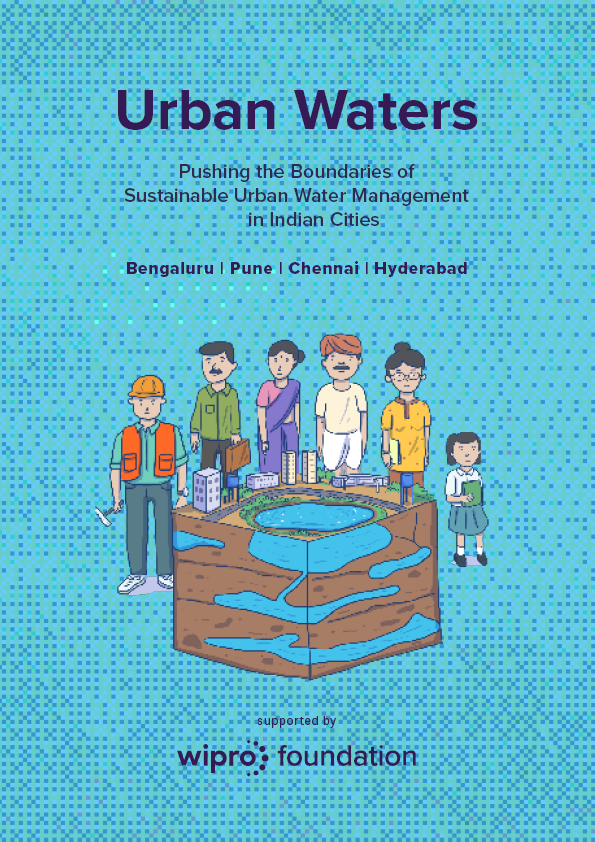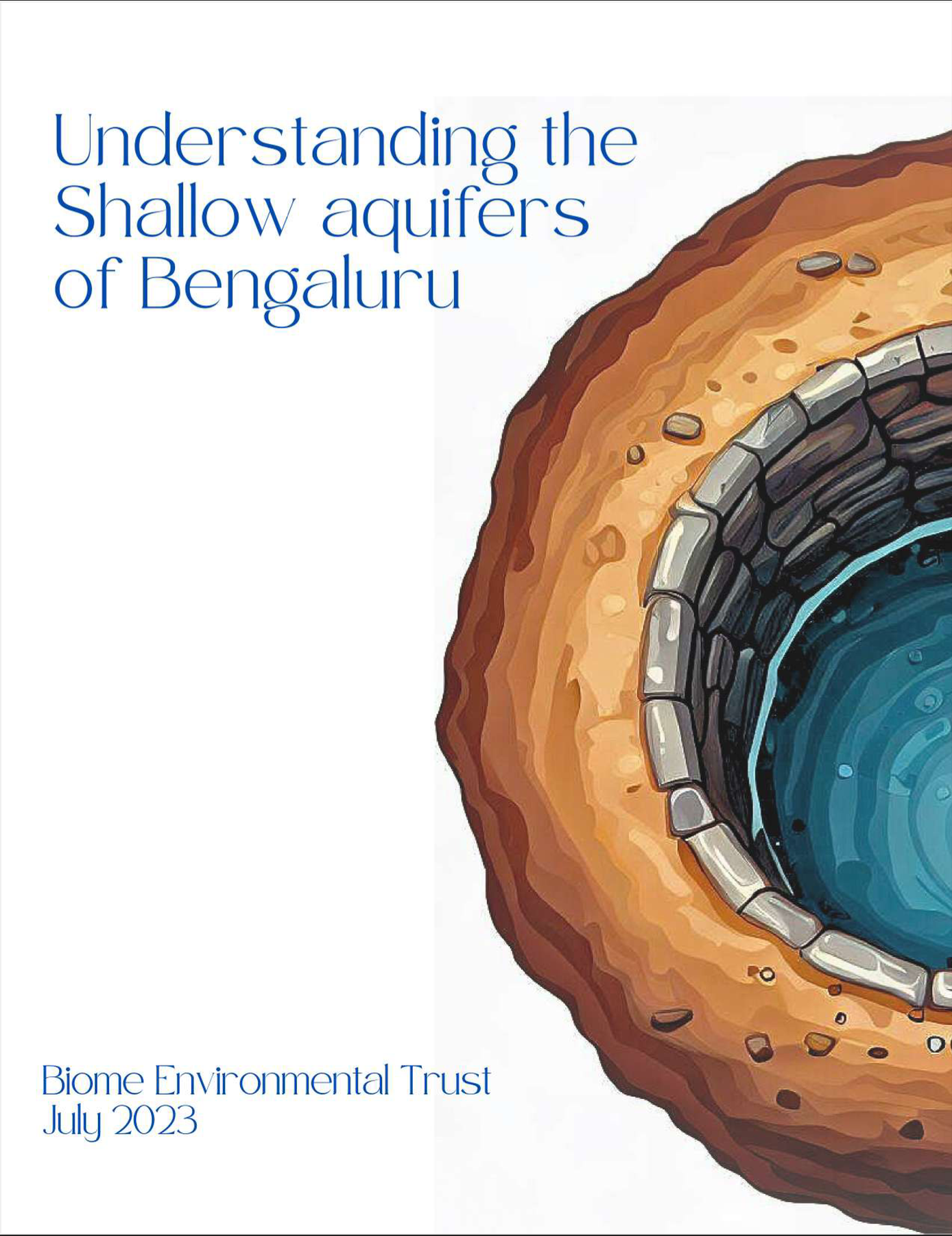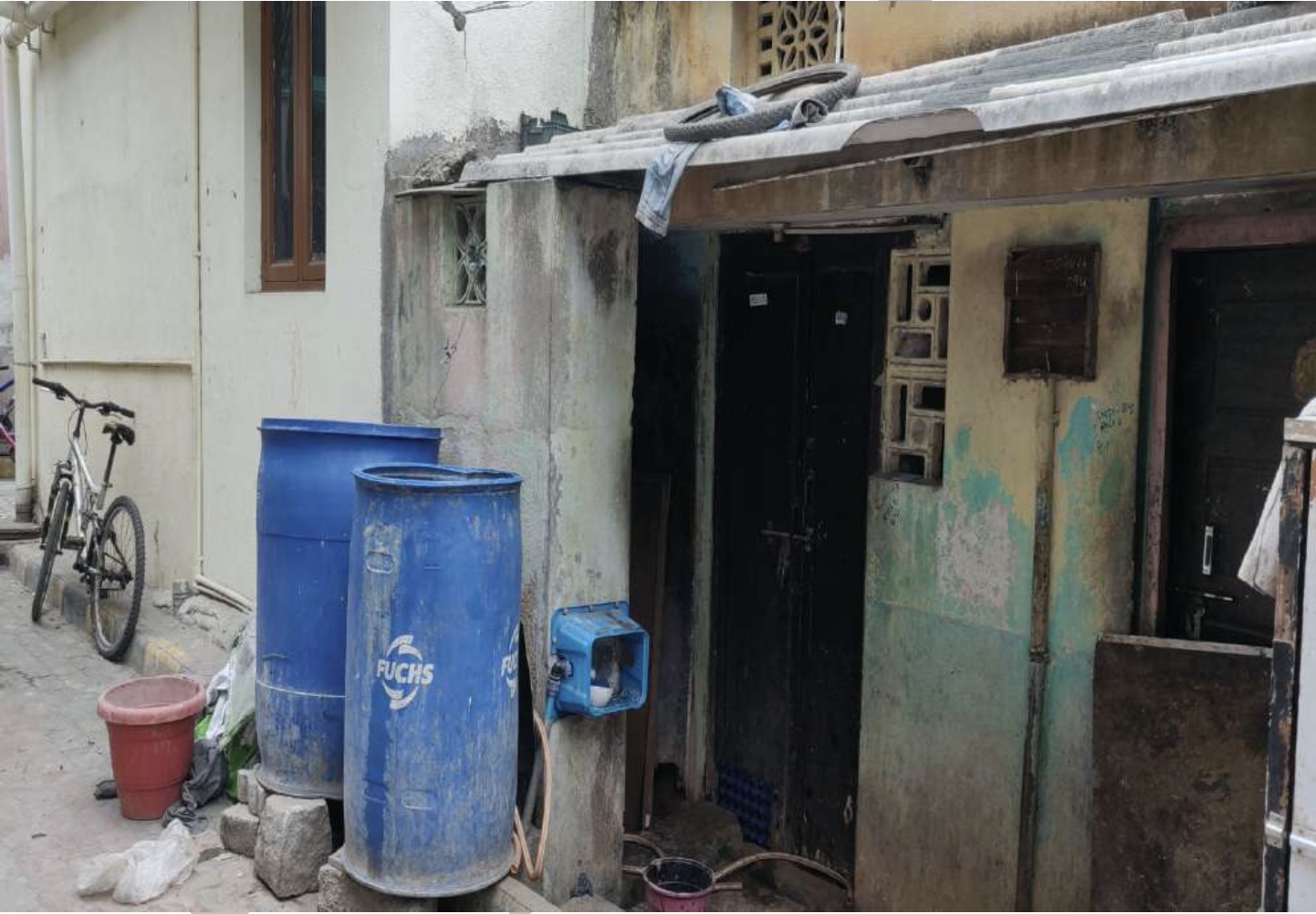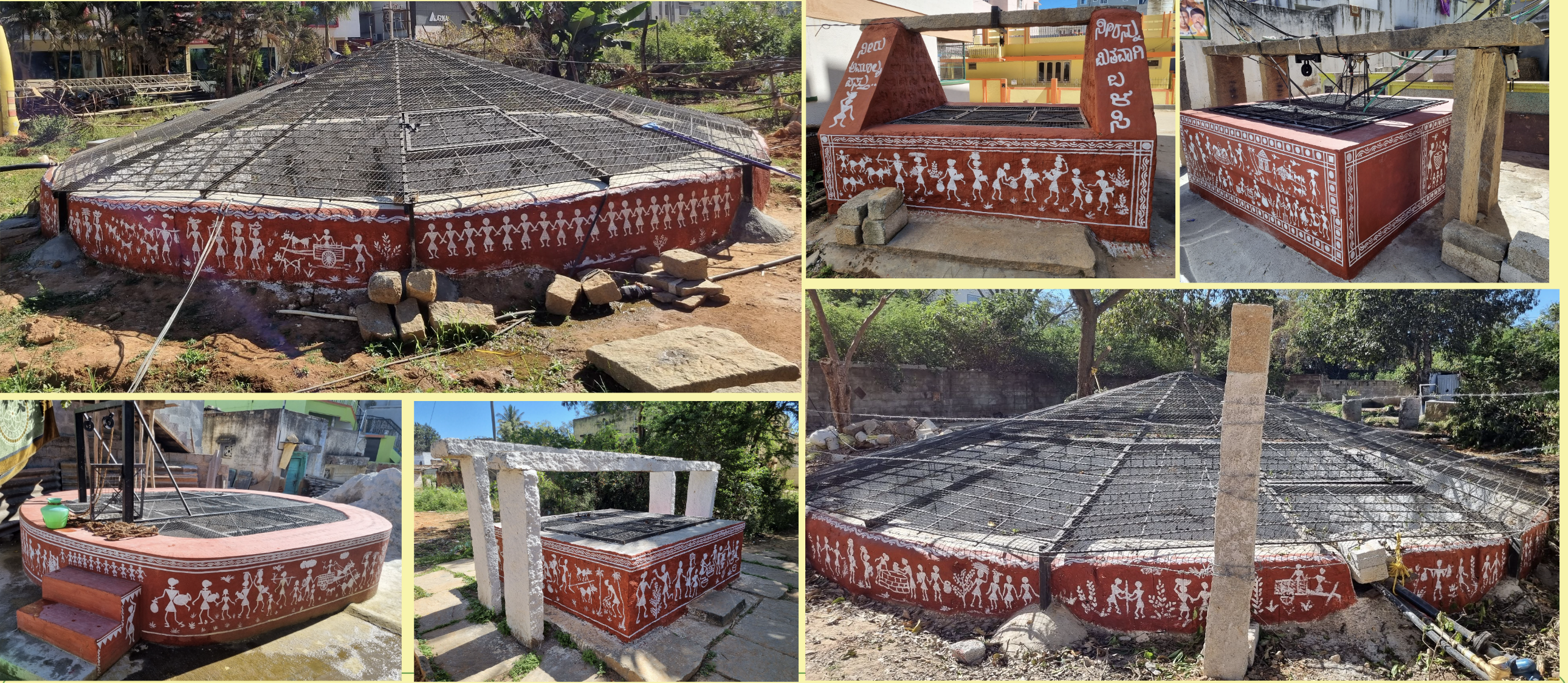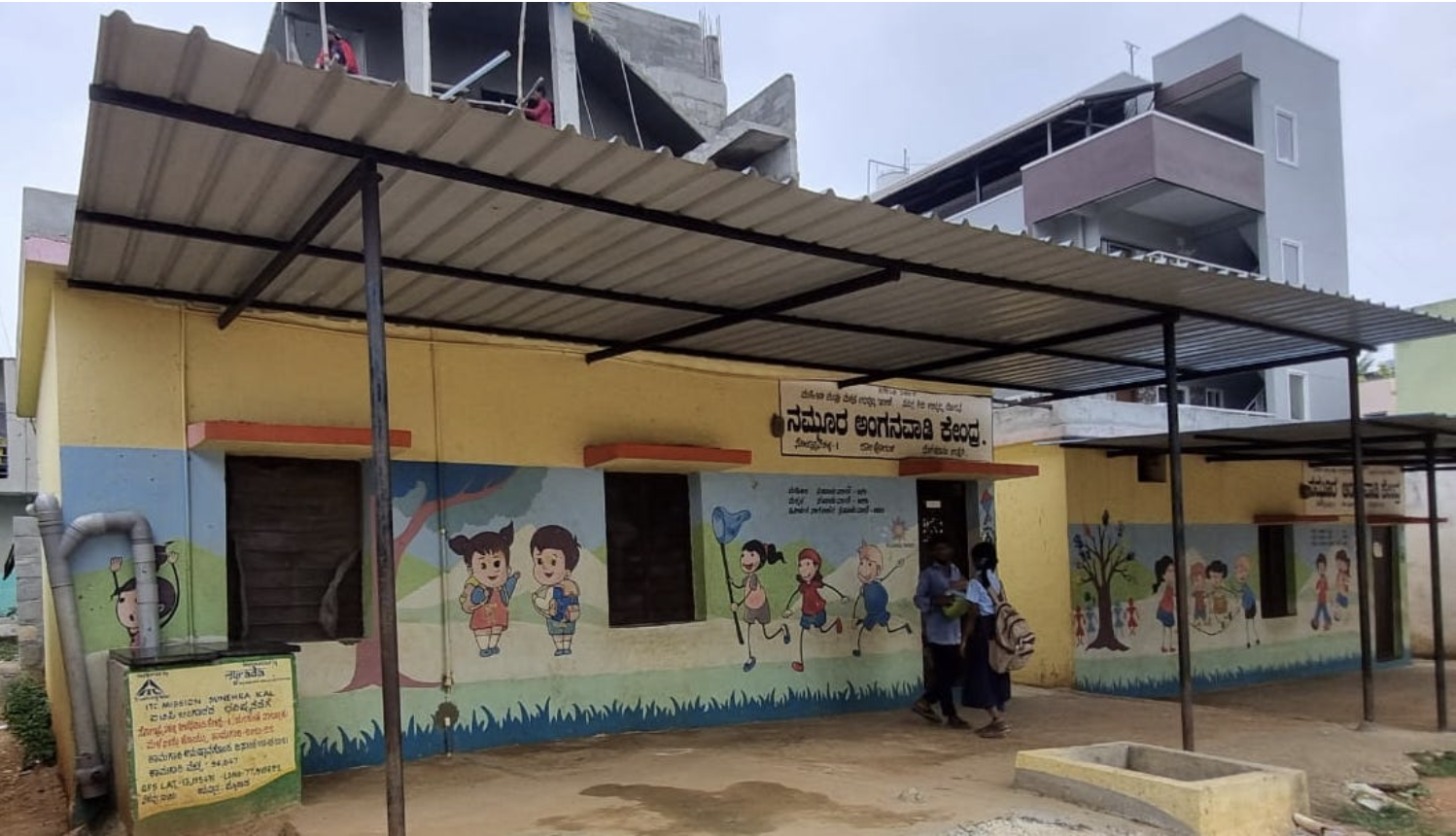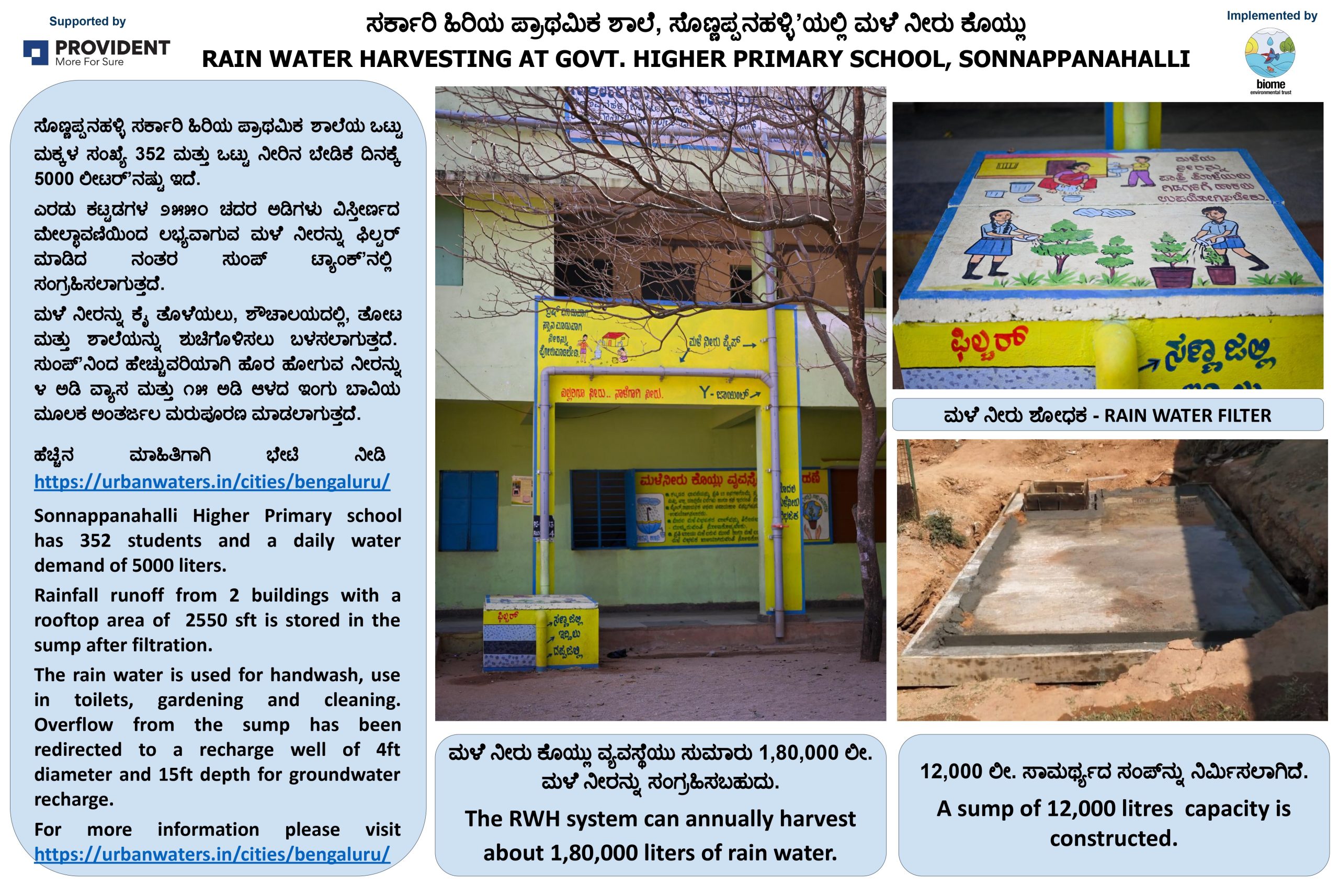Rainwater Harvesting 1: The basics
Imagine if we could get our water for free – no payment to municipal agencies or private tankers, or having to buy cans of drinking water. Rain Water Harvesting (RWH), is a way to meet a large part, if not all, of our water needs and is compulsory as per regulations in Bengaluru. RWH is simply a way to collect and store rainwater for direct use or a way to collect for recharging groundwater. Besides the obvious benefit of getting water for our personal use, Water shortages across Indian cities has prompted many other municipalities and state governments also to make RWH compulsory for households.
Indian cities like Bengaluru face the paradox of acute water scarcity occurring alongside floods. RWH addresses both these issues by:
- Meeting a large part of the city’s water demand, thus reducing water scarcity
- Capturing rainwater that would otherwise run off of paved surfaces and flood the streets
In Bengaluru, on average, every acre of land is estimated to get about 3.6 million litres of rain annually. If even a third of this water was recharged, the city’s water and flooding problems would be significantly solved.
Bengaluru gets around 970 mm of rain annually (long term average), spread across 6-8 months. To what extent can this rainwater meet your water needs if you store and use it directly? That depends on both the size of your rooftop and your water usage. A rough estimate of the amount of rainwater (in kilolitres) that can be harvested from your rooftop can be calculated using this formula: <Size of the rooftop in meters> X 0.9 X 0.97.
In Bengaluru, there are communities that only use harvested rainwater to fulfill their water needs during rainy days. Rainwater runoff from a clean rooftop, after filtration, can be stored and directly used for domestic purposes like bathing and washing clothes. However, due to the possibility of bacteriological contamination, the water should be boiled, or treated using a UV filter, before it is used for drinking or cooking – maintaining a clean rooftop is the first step to ensuring clean water.

In Bengaluru, you can easily set up direct storage for use of rooftop rainwater, unless rooftop maintenance is difficult. Rooftop RWH can be set up with minimum disruptions to an existing building; no re-roofing or major works is required. Also, most buildings already have pipes to drain rainwater from terraces; it’s only a matter of connecting these pipes to channel the water into collection tanks. In the case of new buildings, RWH can be integrated into the design plan. Here is an example from Bengaluru, at the home of Anand, an energy researcher.
If you prefer using rainwater for groundwater recharge, you can channel the water falling on your rooftop, plot or storm water drains into recharge wells. While a conventional well connects to an aquifer to withdraw water, a recharge well instead sends water back into aquifers. Water in recharge wells percolate into shallow aquifers, and from there, into deep aquifers. In Bengaluru’s geology, shallow aquifers are located in the weathered zone, i.e., layers of powdered rock that can absorb water. Beneath the weathered zone is the less permeable hard rock zone that contains deep aquifers.

Water from recharge wells percolates into the cracks and fissures in the surrounding rock system, raising the levels of the water table. This may also increase the yield of nearby wells and borewells. In some cases, groundwater in the location can become saturated enough that the recharge well becomes a withdrawal well in a few years. Water can then be drawn from the well and used for gardening or clothes washing. Recharge wells collect rainwater and puts it back into our open wells and borewells. Recharge wells are essential in cities, as continuous water extraction from open wells and borewells have severely depleted groundwater, they also help to mitigate urban flash flooding.
Recharge wells are ideal for apartments, layouts and institutions spread across a large plot area. Recharge rates, i.e., the rate at which water percolates out from the well, vary depending on the nature of weathered rock zone. A good recharge well can recharge up to 1.5 times its volume over the course of a day. Recharge wells at IIM, Bengaluru, have even shown recharge rates of 1000 litres per hour. In Bengaluru, on average, every acre of land is estimated to get about 3.6 million litres of rain annually. If even a third of this water was recharged, the city would not require Cauvery water supply at all.
Whether you choose for storage or recharge, there are multiple ways to harvest rainfall. There is no recommended ‘best’ method; the best option for you depends on your specific context. You can also implement a combination of these methods. The following guides can help you decide which method best suits your context.
- Storage and reuse of rainwater
- Groundwater recharge with rainwater
This list of trained professionals in Bengaluru or these RWH vendors can also be contacted for support. BWSSB also has an RWH Theme Park in Jayanagar, where various RWH models are demonstrated.
These guides help you implement RWH for a 30mm and 60mm rainfall event. This means that the rainwater harvesting system implemented as per the guide can harvest upto a 30mm or a 60mm rainfall at a time. The BWSSB regulations require implementation for a 20mm rainfall event or higher design – meaning if you follow the guide you are in compliance with the BWSSB regulations. More information is available here.


